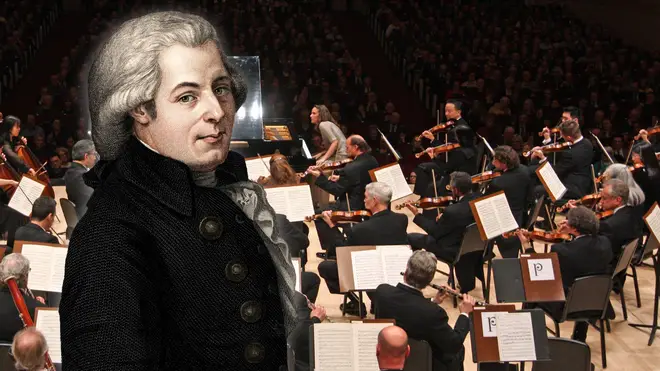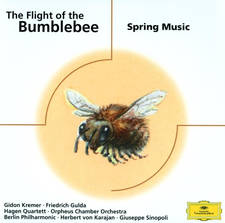The 10 most life-changing pieces of music by Mozart
21 February 2024, 16:30

With extremes at both ends of the emotional and musical scales, Mozart is author of some of the most uplifting and soul-crushing music ever written. Here are 10 pieces that will make you rethink life as you know it...
Listen to this article
The greatest pieces of classical music are the ones that inspire, delight, or move you. So imagine how powerful a piece would be if it could do all three things at once...
Mozart’s music does just that, from soaring arias to the intertwining twin melodies of an operatic duet; pure symphonic joy to devastatingly beautiful requiems.
Here are 10 of his most moving pieces of all time, but be warned: once you’ve heard these, your life will never be the same again.
Read more: The 15 greatest pieces of classical music by Mozart
-
Requiem – ‘Confutatis’
By its very definition, Mozart’s Requiem is an immensely powerful, moving work. Best known of all its movements are the ‘Requiem aeternam’, earth-shattering ‘Lacrimosa’, and fateful ‘Dies irae’.
But a sparkling gem lies within Mozart’s great masterpiece, waiting to be discovered.
The ‘Confutatis’, masterfully examined in the 1984 film Amadeus as Mozart dictates the score on his deathbed, is the perfect contrast of light against dark.
One moment filled with imperative doom, the next sublime solace, Mozart harnesses the most potent aspects of humanity in just two and a half minutes of music.
Read more: Musicologist adds hypnotic scrolling score to powerful ‘Amadeus’ scene

Wolfgang Amadeus Mozart - Requiem [Confutatis/Lacrimosa]
-
‘Jupiter’ Symphony No.41 – fourth movement
If you want to hear the sound of pure, exuberant joy, the glorious finale to Mozart’s Symphony No.41 has you sorted for life.
Nicknamed ‘Jupiter’, the symphony is Mozart’s final and finest example of the musical form, and reaches something near perfection.
Writing it in a whirlwind of productivity in the summer of 1788, mere days after he’d finished both his 39th and 40th symphonies, Mozart ends his masterpiece with a climactic five-theme fugue that takes more than a small amount of genius to pull off.
As Sir George Grove said himself: “It is the greatest orchestral work of the world which preceded the French Revolution.”

Mozart: Sinfonie Nr. 41 C-Dur KV 551 (»Jupiter«) ∙ hr-Sinfonieorchester ∙ Andrés Orozco-Estrada
-
Piano Concerto No.20 – first movement
Mozart famously reserved the key of G minor for some of his darkest, most tragic works – but there’s a fair amount to be said for his works in D minor, too.
It’s a key of powerful epics, one he used for his Requiem, the Queen of the Night aria in his opera The Magic Flute, parts of Don Giovanni, and also for his Piano Concerto No.20.
A dark and uneasy orchestral introduction gives way to a delicate, soul-bearing solo piano line.
These light and dark forces battle throughout the first movement, as the piano attempts to lead the orchestra into brighter terrains, while the orchestra in turn stubbornly digs its heels further into the unsettled ground.
Read more: Singer gives astonishing karaoke performance of Mozart’s ‘Queen of the Night’

Mozart Piano Concerto No 20 K 466 D minor Maria João Pires Daniel Harding Swedish Radio Symphony Orc
-
Ave verum corpus
One of the most soul-healing few minutes of classical music, ‘Ave verum corpus’ was written by Mozart during his final year.
Visiting his wife, Constanze, in Austria, the composer may have already known that his final days were drawing near.
Taking to a sublime Latin text, he sat down to write just 46 bars of music, at a little over three minutes long.
But those three minutes are all Mozart needs to transport us to a heavenly plane.
Just listen to this...

Mozart's 'Ave Verum Corpus' at St James' Roman Catholic Church
-
Piano Concerto No.21 – second movement
More than 180 years after it was written, Mozart’s Piano Concerto No.21 enjoyed a second burst of fame as part of the soundtrack to the 1967 film, Elvira Madigan.
It’s the second movement, the Andante, which captured the minds and hearts of the film’s audience, and continues to be one of his most beloved works to this day.
Mozart’s stripped-back orchestration sees the piano accompanied for the most part by only muted strings, pizzicato basses, and the pianist’s own left hand.
Its wandering, dream-like, luxuriously lethargic melody creates the perfect escape from real life. Sit back, relax, and enjoy the most beautifully relaxing eight minutes of music ever written...

Lang Lang - Mozart Piano Concerto No.21 K467 with Bavarian Symphony Orchestra; Conductor: M Jansons
-
Solemn Vespers for a Confessor – ‘Laudate dominum’
Mozart’s Solemn Vespers may be his most heavenly work.
A musical setting of Psalm 117, it doesn’t take a religious person to hear the pure divinity of this piece for soprano, string orchestra, and chorus.
The soprano line soars above the gently rocking strings in a gorgeous spotlight moment, before a full choir joins.
The warm sound of the full ensemble envelops its listener in a calming, all-encompassing embrace, as all mortal fears fade away...

Laudate Dominum – Bel Canto Choir Vilnius
-
Così fan tutte – ‘Soave sia il vento’
From Mozart’s opera, Così fan tutte, comes one of the most sublime vocal trios ever written.
The intertwining voices of Alfonso, Dorabella and Fiordiligi float through the air over the sea, as they bid safe travels to their friends and lovers who have set sail for war.
It’s a tender moment, full of intense affection, well wishes, and grave concern – and Mozart contains it all in a delightfully delicate musical moment.

Così fan tutte – Act I trio ‘Soave sia il vento’ (Mozart; Winters, Brower, Kränzle, The Royal Opera)
-
The Marriage of Figaro – ‘Sull’aria’
From one operatic number to another, Mozart’s ‘Sull’aria’ from The Marriage of Figaro is a sublime duet between Countess Almaviva and her maid Susanna.
The pair are crafting a letter, inviting the Count to a midnight meeting to try and catch him red-handed cheating on the Countess.
Mozart’s musical treatment is surprisingly delicate, fixating on the warm friendship between the women over any kind of rivalry or bitterness.
It was this warmth that made it the perfect pick for 1994 film The Shawshank Redemption, too. As it plays out over the prison speakers, Red narrates: “I have no idea to this day what those two Italian ladies were singing about...
“I’d like to think they were singing about something so beautiful it can’t be expressed in works, and it makes your heart ache because of it.”
Read more: This double bass cover of The Shawshank Redemption theme is incredibly chilling

Julie Fuchs and Olga Peretyatko: Sull'aria
-
Serenade No.10 for winds – third movement
Often nicknamed the ‘Gran Partita’, the third movement of Mozart’s Serenade No.10 for winds is a delightfully simple yet skilful example of the composer’s brilliance.
A softly pulsing accompaniment rocks calmly throughout the piece, beneath a soaring melody that is passed between solo oboe, clarinet, and basset horn.
Much like the Requiem, it featured prominently in Amadeus, as Salieri declares: “This was a music I’d never heard. Filled with such longing... such unfulfillable longing.
“It seemed to me that I was hearing the voice of God.”
Read more: 10 pieces of classical music that will 100% change your life

Mozart: Serenade No 10 for Winds 'Gran Partita', III. Adagio | LSO Wind Ensemble
-
‘Vorrei spiegarvi, oh Dio!’
Mozart wrote several soprano arias for Aloysia Weber, who was something of a muse for the composer.
He had tutored the young singer in the 1770s, eventually falling in love with her and even suggesting marriage. Alas, it wasn’t to be, and Mozart married her sister, Constanze, instead.
Nevertheless, Mozart’s wrote for Aloysia one of the most soaring and sublime soprano arias of all time.

Mozart: "Vorrei spiegarvi, oh Dio" - Sabine Devieilhe
























